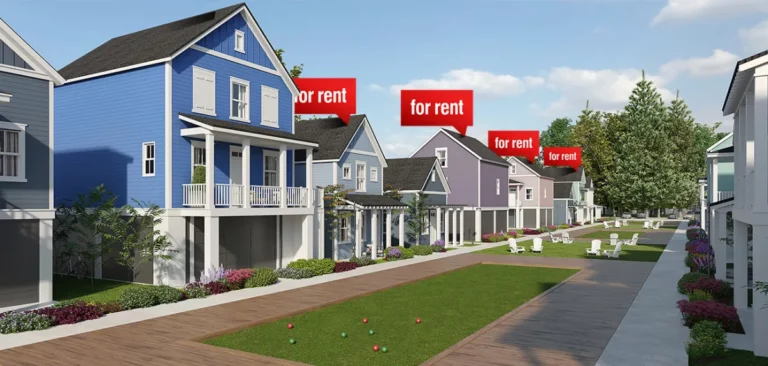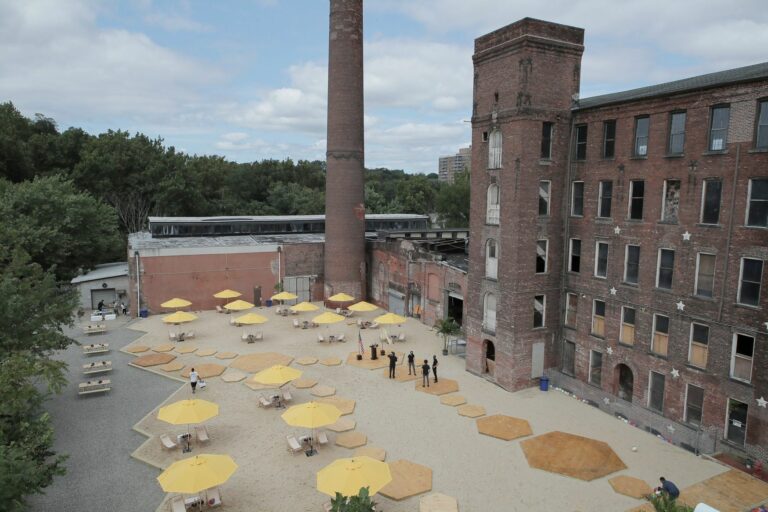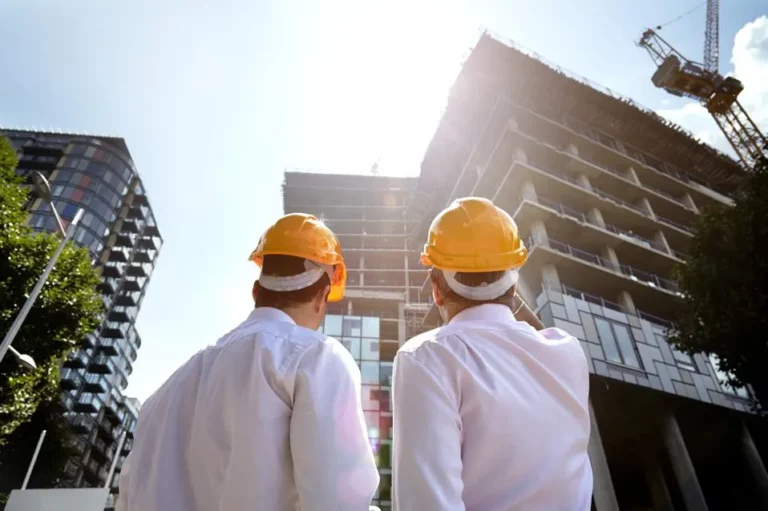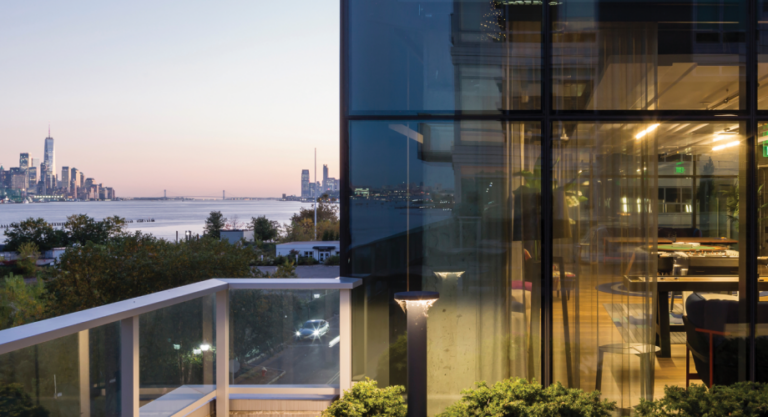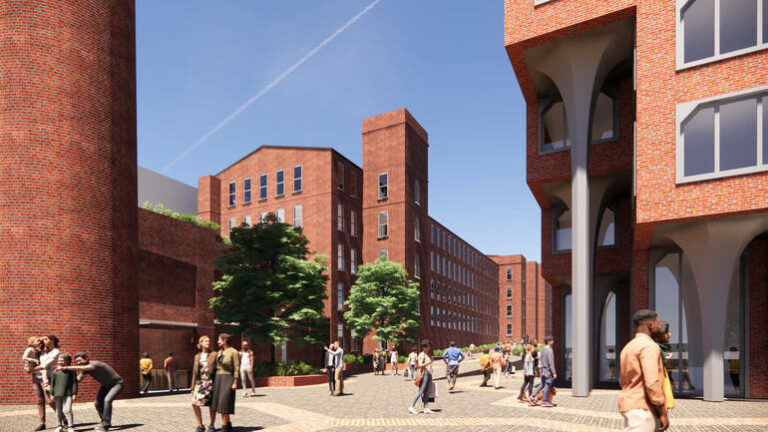The Rise of the “Retail Village”
The city of Oakland, California’s Community and Economic Development Committee is keeping a team of developers on the edge of their seats—again. On March 14, 2023, the committee was scheduled to vote on a resolution that would grant $18 million to Mandela Station, a 766-unit development project (including 240 affordable housing units) set for what is now a five-and-a-half acre parking lot for the West Oakland station. If awarded, the $18 million grant would put the project’s affordable component in a position to file for tax credit financing, which is a highly complicated source of funding for affordable projects and frequently the final link in their financing chains. Alas, minutes from the March 14th meeting reveal that the vote was pushed to March 21, leaving the project’s developers to gnaw on their fingernails for another week.
Mandela Station is not the only development in the midst of a legislative approval process. On the very day that the Mandela project was supposed to receive a yay or nay in additional funding, city council members of Killeen, Texas unanimously voted to rezone more than 200 acres to allow for the construction of Anthem Park, a development that will contain 1,700 units of residential and commercial space. Such a proposal had been floated around for more than a decade, but pro tem mayor Ken Wilkerson is confident that pushing Anthem Park now will revitalize Killeen with more housing opportunities, retail options, and entertainment spots. “I think this is a great opportunity for the city of Killeen,” Wilkerson said. “I don’t see too many projects come before us that [are] an opportunity to grow our city the way we’ve been wanting to do it for decades now.”
Although Killeen is nearly 2,000 miles away from Oakland, the city is feeling similar pangs of a housing crunch. Prices for homes in Killeen have risen steadily in the past few years with no signs of slowing down, and many residents have already been priced out. Local reports from last fall show that Killeen’s percentage of 30 to 90 plus day delinquent homeowners rivaled Houston, a city with nearly 16 times Killeen’s housing stock. Both Oakland and Killeen have an affordability crisis on their hands, and bringing shoppers into the area might be part of the solution.
Wait, what is a retail village?
Both Mandela Station in Oakland and Anthem Park are considered retail villages, mixed-use developments that are designed to mimic the look and feel of a traditional village or small town. They typically consist of a pedestrian-friendly layout with shops, restaurants, and other services arranged along sidewalks and plazas, and may also include entertainment venues and outdoor features like fountains, gardens, or playgrounds.
Retail villages are typically located in urban or suburban areas, and are often part of larger mixed-use developments that include residential, office, and entertainment space. They are designed to create a sense of community and place, with a focus on creating a unique and memorable retail experience that goes beyond the traditional mall or shopping center.
As consumers increasingly seek out experiences over traditional shopping, developers are looking to create environments that offer more than just a place where people can buy goods. Retail villages offer a range of amenities that can attract and retain visitors, and often, a more resilient tenant mix for landlords; they typically feature a mix of national chains and local businesses, which can create a more dynamic environment that appeals to a range of consumers and a more diverse owner/operator portfolio that buoys economic downturns and changing market conditions.
The retail village concept has been on the rise for several years now, and there are plenty of success stories. From San Jose’s Santana Row, the 42-acre “village within a city” that has bustled for 20 years now, to Scottsdale’s Kierland Commons which which created a sense of place as Arizona’s first lifestyle center, to The Domain in Austin which has drawn a huge number of residents, shops, and eateries to its 300-plus acres for 10 years now. All of these projects have served as inspiration for retail developments to evolve into what are essentially mini-metropolises. “It became a template everyone wanted to copy,” said Kelly Snider, one of the Federal Realty Investment Trust team members charged with creating Santana Row out of an obsolete strip mall. “Every single other community where we now go and try something like mixed-use developments, someone says, ‘Will it be like Santana Row? How do we get our Santana Row?’
Retail villages can be a catalyst for economic development in an area, attracting new businesses and creating jobs. They can also reignite existing commercial areas and improve property values. But a retail village development requires careful planning and execution to successfully reach those goals. When executed well, there’s a lot of good that retail villages can do, but they can be a money pit when they’re not.
Retail (housing) therapy
The main goal of a retail village is to create a vibrant, walkable community that offers a unique and desirable shopping and entertainment experience. But a key component of guaranteeing that people will occupy a space is to make sure that the site is located near enough people to fill it. This can be helped by including housing in the design but usually requires help from the surrounding area.
Jim Driscoll, SVP of Development and Acquisitions at Blue Onyx Companies, has a bone to pick with developers who rush into the retail village concept without taking the surrounding locale into account. “From a planner perspective, obviously, mixed-use is wonderful,” he told me. “But if you’re in a traditional location that’s full of suburban, single family homes, the chances of that working are slim because you don’t have that proximity of population. The reality is that you need a pretty wide radius of people who are within a half-mile walk or a 15-minute drivability radius in order to be able to support those retail uses.”
Green Steel May Be the Future, but It Needs a Marketing Campaign
A lack of proximity to population is exactly what choked The Village at Meridian in Meridian, Idaho. The development opened in 2013 and was designed as a mixed-use development that included retail, dining, office, and residential spaces. However, its location on the outskirts of the city and lack of easy access from major highways made it difficult for people to visit. Meridian is a growing city located just west of Boise, Idaho’s capital city. The Village at Meridian was developed on a greenfield site in an area that was rapidly expanding with new residential subdivisions. Many of these subdivisions were still under construction when the development opened, and the lack of nearby residential density meant that the development had a limited customer base.
Despite efforts to attract tenants and customers with unique amenities such as a movie theater, a water fountain show, and an ice-skating rink, the development struggled to generate the necessary foot traffic to sustain its tenants. The Village has since undergone some changes, including the addition of new tenants and the expansion of the residential component. However, its location remains a challenge, and it has yet to achieve the level of success that was originally envisioned.
The idea of “if you build it they will come” doesn’t necessarily ring true when it comes to retail villages. But what might be a more important question is will these villages spur more infill development in the surrounding area. This is the bet the developers behind the Oakland and Killeen projects are making.
In theory, the retail village model has the potential to offer savings to both developers and tenants. By combining different uses in a single development, developers are able to negotiate lower construction costs by sharing infrastructure, such as parking garages or sidewalks, between different uses. The hope is that this infrastructure, along with the new demand to live next to a “village,” will help create an appetite for more adjacent development.
Having shopping, restaurants, and entertainment close to a large common is how original villages came about. Now many want to recreate that synergy in our modern American cities. There will likely always be a draw to a “village” but as we have seen, creating sufficient housing and promoting infill around them is the key to making these villages as lively as we all would like to see.

